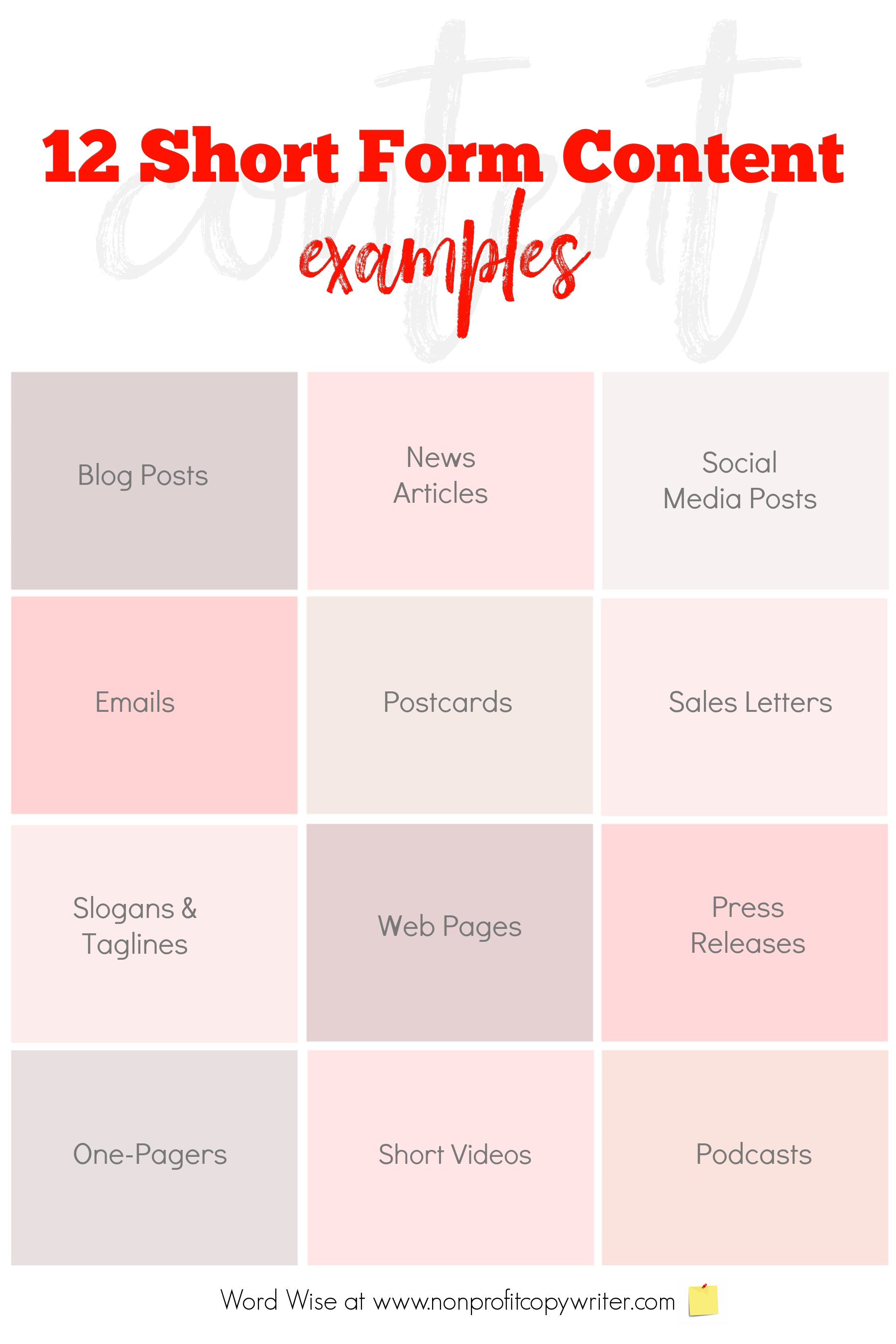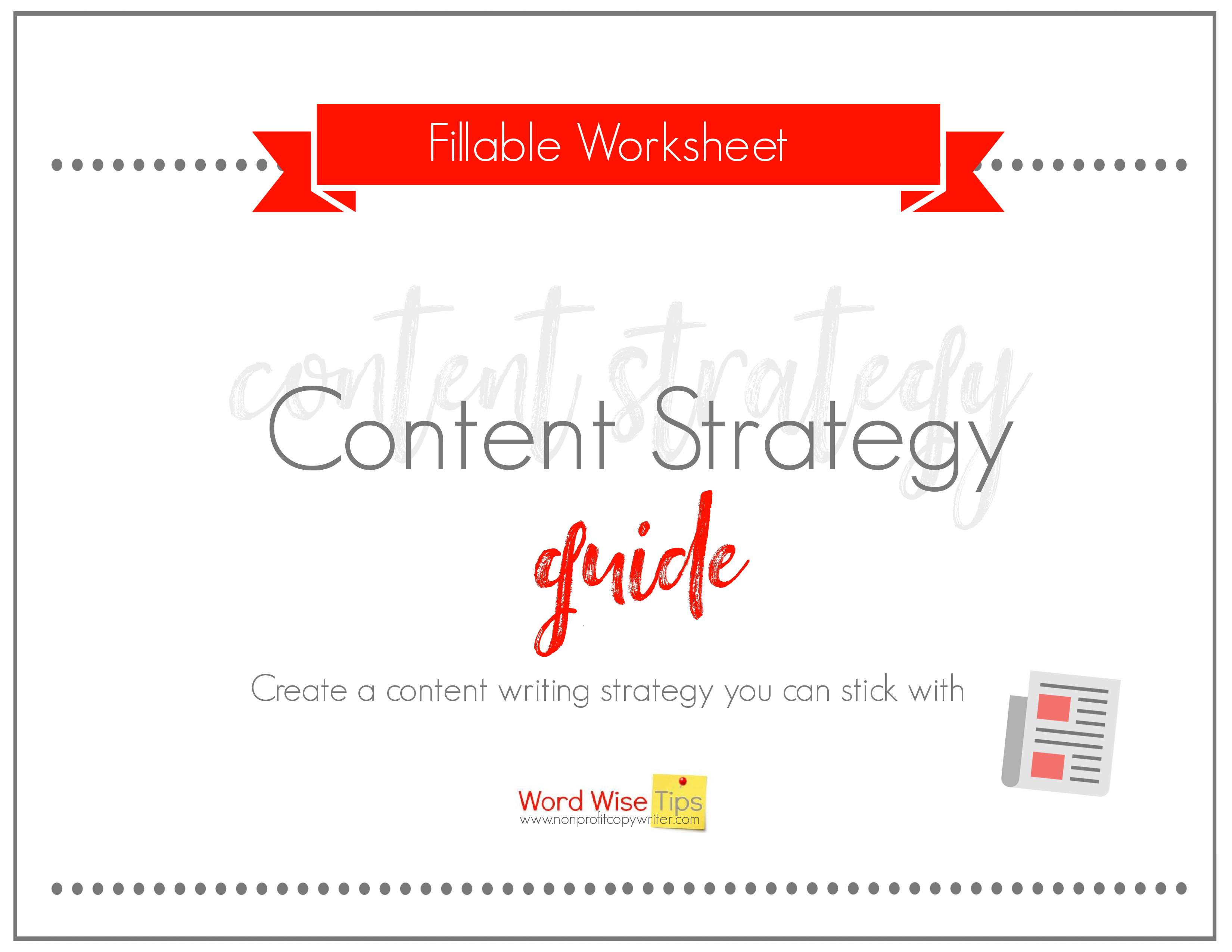Save Time: Get 5 Simple Writing Tips
you can put to use in 10 minutes
What Is Short Form Content?
Award-winning writer Kathy Widenhouse has helped hundreds of nonprofits and writers produce successful content , with 750K+ views for her writing tutorials. She is the author of 9 books. See more of Kathy’s content here.
Updated 11.25.25
Long-form content vs short-form content: a debate swirls around the merits of each one. But in the words of Content Hacker founder Julia McCoy, “There’s a time and a place for both types.” If you’re a content writer, you want to understand the two forms and when to use them.
But first things first.
Q. What is short form content?
Short-form content is any kind of content that an audience can consume quickly, whether they’re reading, listening, or watching.
As for the written version, short-form content is 1,200 words or fewer. Some marketers draw the cut off-point at 1,000 words — and still others place the dividing line at 750 words. Bottom line: short-form content is easy to read and digest in just a few minutes.
And short form content offers another distinguishing feature: its purpose is to communicate one idea clearly.
Q. What are some short-form content examples?
- Short blog posts
- News articles
- Social media posts
- Emails
- Postcards
- Sales letters
- Slogans and taglines
- Web page content
- Press releases
- One-pagers
- Short videos and podcasts
Q. Long-form content vs short-form content — what’s the difference (beyond length)?
While written long-form content clocks in at 1,200 words or more and short-form content less than that number, the difference between the two is more than the word count. Long-form content addresses a topic from several different angles, often as thoroughly as possible. Short-form content communicates one message.
That’s not to say that short-form content is just fluff. Quite the contrary. The best-written content — long or short — offers useful, valuable, or entertaining information to the reader. Short-form content simply does so in a tight structure. You can think of long-form content as a full meal with several courses, while short-form content is a nutritious snack.
The two forms also achieve different purposes for readers. Well-written long-form content is, well—longer. That means it includes more keywords, which search engines like. Long-form content tends to rank higher in searches. If you want to build traffic, include long-form in your content writing strategy.
On the other hand, users don’t need an exhaustive answer to their every question or problem. Sometimes a quick explanation is the order of the day. Brevity and clarity are where short-form content excels. Readers who want a fast answer or an insightful viewpoint or an imaginative solution can find it in short-form content. Short content brings new readers into your fold, which is an important element in a healthy content strategy.
Use this fillable, reusable Content Writing Guide to create your own content strategy.
Q. What are the dangers of writing short-form content?
“Formulaic.”
“Shallow.”
“Lacks authority.”
Those are some of the objections you may hear to the value of short-form content.
More words doesn’t guarantee depth and credibility to a piece of content. In fact, I’d argue that the ability to write quality short-form content is a valuable skill. In days gone by (and in some instances still), writers needed to conform to a publication’s word count. That takes tight writing. Every word matters.
You can give short-form content depth by including details … offering a unique fact or insight about a topic … creating internal links to other pages on your site for readers who want more information about an associated subject. The best content, whether long or short form, is well-written and offers value to the reader.
Q. What is microcontent?
If long-form content is a full meal and short-form content is a substantial snack, then microcontent is a bite-sized nugget. Microcontent is a form of short content that can be consumed in 30 seconds or less. Think headlines, subject lines, captions, tweets, slogans, taglines, and social media posts.
Q. Is short-form content taking over?
Short video content has exploded in popularity. It’s easy to create and distribute … and simple for viewers to respond to. Plus, shorter attention spans mean shorter content is consumable for more users. “Major social media platforms are now offering opportunities to create short content,” says Victor Potrel of The SoulPublishing. “This can make video content more accessible for viewers and content creators.”
But is short-form content taking over? Not if users continue to search for thorough or exhaustive information offered in long swatches of content.
Q. How can you use short-form content?
Short-form content lets you deliver your message quickly and effectively without overwhelm. It’s a useful tool to use to attract new readers who want simple, to-the-point answers to their questions. Plus, short-form content is more shareable than long-form content. Wouldn’t you rather share a short post or a 500-word article with a friend who needs a quick answer to a question — versus a 100-page eBook? Short content allows you to reach a wider audience.
Q. Which is better: short-form content or long-form content?
It depends. “Long-form content and short-form content are just tools marketers can use,” says digital strategy consultant Chris Giarratana. “Neither tool is necessarily better than the other, but each should only be used in specific situations and for a particular reason.”
Long-form content, like an eBook or a long article, provides information that a reader needs to decide about expensive or complicated products, services, and causes. Long-form content also draws in higher rankings on search engine results.
Short-form content, however, takes less time for readers to digest and is more mobile-friendly than long-form content. Given decreasing attention spans, more readers consume short-form content in its entirety than they do long-form content. Put together, those factors translate to higher reader engagement. And short form content receives more comments and shares.
Both long and short have a place in a content marketing strategy. This means content creators who are skilled in both are valuable as writers for hire. And if you publish your own content, then both forms can help you reach your goals.
“How long should my content be?” The answer to that question isn’t a word count. Rather, the answer is, “As long or short as needed to provide value to your reader — and to meet his needs.”
More Content Writing Tips
How To Choose Content Topics for Your Content Calendar ...
How to Create a Content Strategy You Can Stick With ...
The Case for Short vs. Long Form Content ...
How to Create Valuable Content (Not Informational Junk Food) ...
Reach More Readers With Repurposed Content ...
4 Types of Content: The Magic Is In the Mix ...
A Simple Content Calendar Template for Bloggers and Solopreneurs ...
The Skinny on Thin Content: Don’t Put Rankings Over Readers ...
7 Different Types of Content Writing You Need to Master ...
More Tips for Writing Content on our Pinterest board ...
Return from What Is Short Form Content to Nonprofit Copywriter home
As an Amazon Associate I earn from qualifying purchases.
Share This Page

Named to 2022 Writer's Digest list
BEST GENRE/NICHE WRITING WEBSITE


Stop Wasting Time!
Grab your exclusive FREE guide, "5 Simple Writing Tips You Can Put to Use in 10 Minutes or Less"













